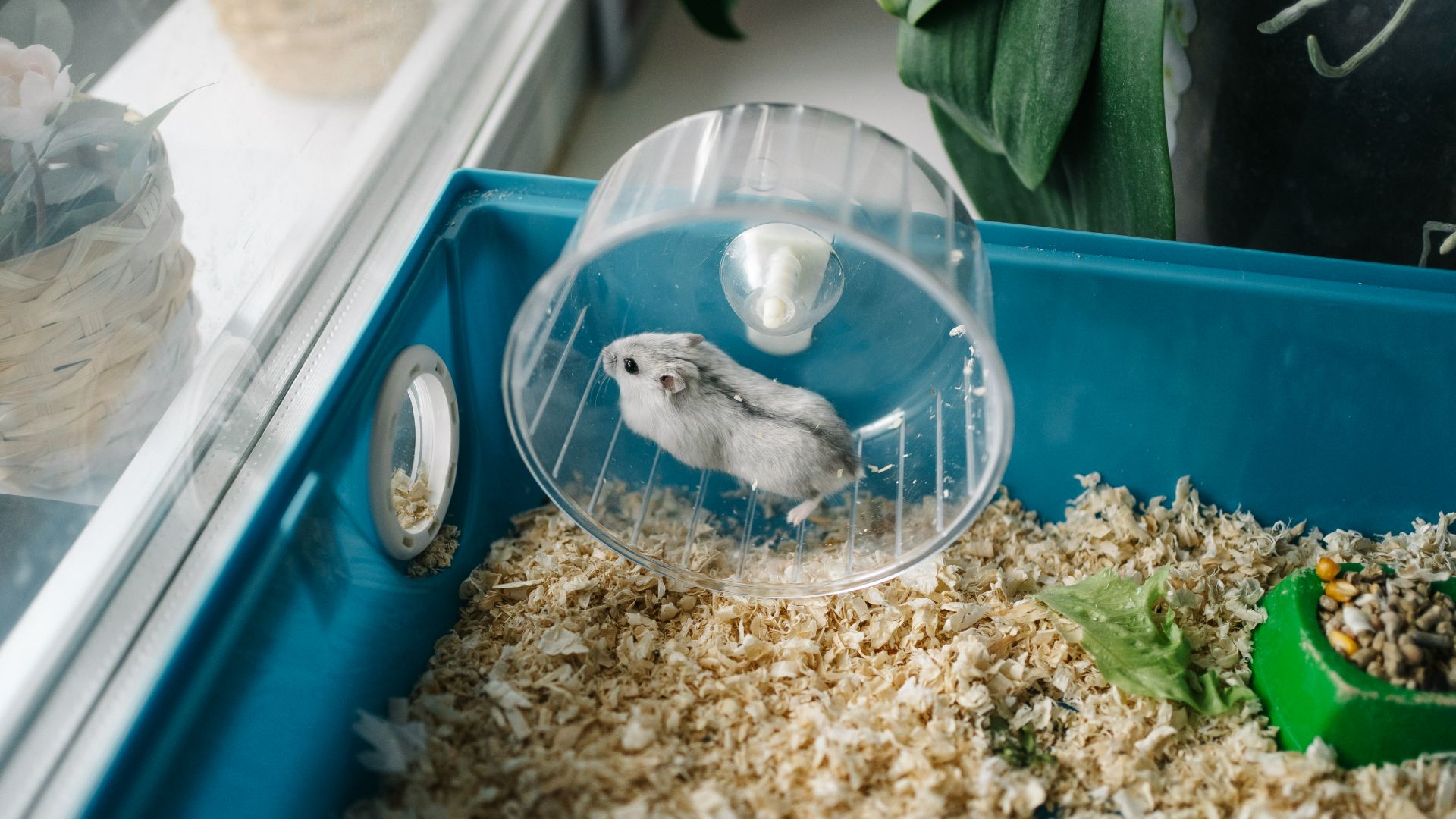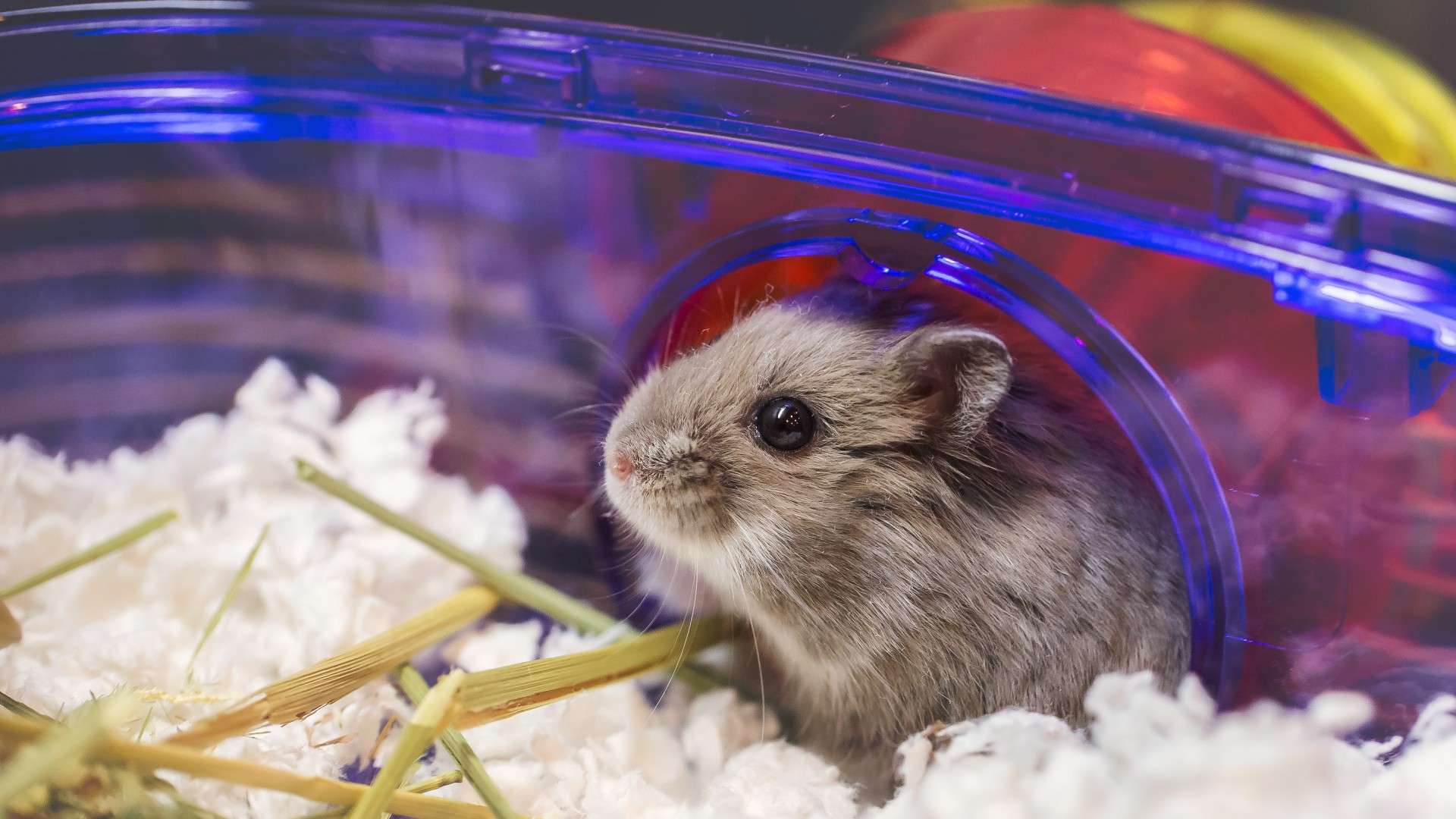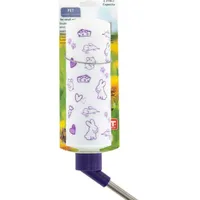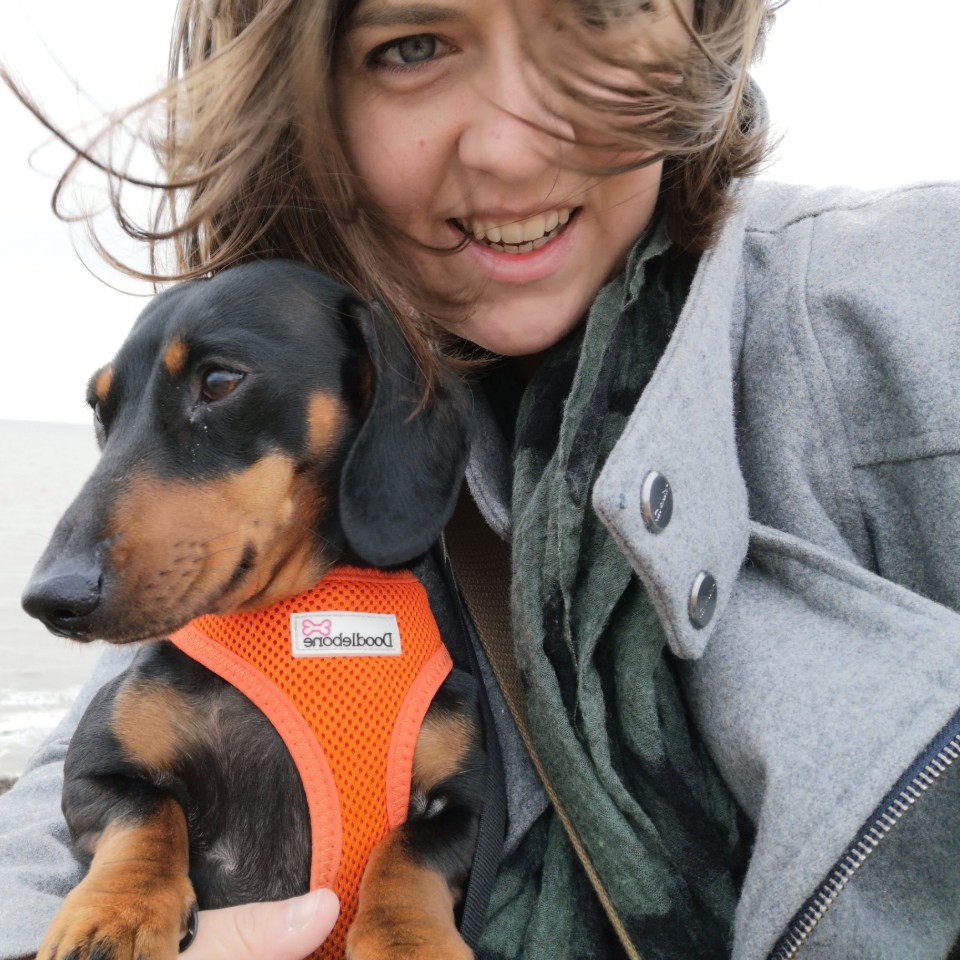Need to know how to set up a hamster cage? Our vet shares her top tips
Check out how to set up a hamster cage to make sure your hamster thrives in their environment.

Learning how to set up a hamster cage is one of the first steps to being a responsible hamster pet parent. You’ll want to consider things like the size of the cage, materials for burrowing, and other items you can add for their enrichment like a hamster wheel and drinking bottle.
If you invest in one of the best hamster cages, you’re already on the right track. In their hamster cage, you want to be sure that they have plenty of space to act out their natural habits like burrowing and you’ll need some of the best hamster toys to keep them occupied.
As for how to set up your hamster cage, we spoke to vet Dr. Rebecca MacMillan and she gave us her top tips for making sure it’s set up to support your hamster’s development. Let’s see what she had to say.
How big should a hamster cage be?

The first thing you should consider when researching the best hamster cages to buy is the size (and shape) of the cage. You should also think about the space that you have available to put the cage.
Although hamsters are small, they are creatures who like to burrow, dig, and run around, so you should plan for as big a cage as is practically possible - in terms of available space, budget, and your ability to keep it clean.
For more detailed information on why the size of a hamster’s cage is important, read our guide on how big should a hamster cage be.
MidWest Homes for Pets Hamster Cage | Amazon
This hamster cage has everything you need to keep your hamster healthy and happy. It has a multi-level play space, an exercise wheel, a nesting nook, and even a food bowl and water bottle.
How much bedding does a hamster need?
Inside the cage, you’ll need a couple of different layers of bedding and different types. Throughout the cage’s main areas, you should have a base level of “substrate” material, which acts a bit like the cage’s carpet.
Get the best advice, tips and top tech for your beloved Pets
Lots of hamster owners go for sawdust here, as it’s cheap, easy to burrow in, and absorbent. You want to include a nice thick layer to give your hamster plenty of capacity to burrow and to provide a nice warm base for the cage.
You should also include a different type of bedding that your hamster will use for sleeping. There are lots of different types of material that you can use for this, but generally, you should avoid anything that is fluffy or prone to separating in a tangly way (such as cotton wool) - in case your hamster’s limbs get caught or stuck.
Kaytee Clean & Cozy White Paper Bedding | Amazon
Designed for small animals, this paper bedding is fragrance-free and can absorb up to six times its weight in liquids to keep your hamster’s home dry and odor-free.
If you’re wondering do hamsters hibernate – the answer is, yes it’s actually called torpor, which is similar to hibernation. But it’s not good for domesticated hamsters to do so, as it’s usually a sign that they are too cold. To avoid this, you should make sure that their cage is lovely and warm, has plenty of bedding, and is kept somewhere away from draughts.
Can you use toilet paper for hamster bedding?
Lots of online forums and advice sites suggest that using toilet paper is a good idea for hamster bedding. But before you use it, make sure that it’s ripped into strips so that your hamster can nest with it appropriately. You should also avoid using dyed or colored toilet paper as this can be harmful to your hamster should they stuff it in their cheeks (which many hamsters will do if they fancy moving their bed to a different area).
You should also note that human toilet paper is not designed to eliminate odors in the same way that bedding designed specifically for small pets often is. In short, while you can use it, using specifically designed hamster bedding is usually a better and more convenient option.
What hamster accessories should I buy?

Once you’ve settled on a cage – or at least the type of cage – you want to buy, you should also think about the accessories you will need to make sure your hamster is a happy one.
There are many hamster accessories you can buy. Dr. MacMillan recommends the following items…
Wheel
Making sure your hamster gets plenty of exercise is very important. Dr. MacMillan says, “It is important to get the correct size for your hamster so that they can exercise freely without causing back injuries. The wheel should be enclosed on one side and have a solid running surface, to avoid injuries.”
Food bowl
Although your hamster will invariably move, burrow, and hide their food, having a centralized bowl to put it in is helpful to monitor how much food they’re taking. Keep an eye on any secondary food sources to make sure it’s always clean and freshly replenished. If you’re not sure exactly what to feed your hamster, check out these 32 surprising things your hamster can eat and things hamsters shouldn’t eat.
Water bottle
“This can be a shallow water bowl or a bottle. A bowl will allow your hamster to drink in a more natural position but is more at risk of being spilled or contaminated with food and bedding,” says Dr. MacMillan. You can also look for those that clip onto the side of the cage with an opening inside it. Make sure you change the water daily.
Lixit Weather Resistant Cage Water Bottles | Amazon
This 8oz bottle is the perfect size for a hamster cage. It is weather-resistant so can be used both indoors and outdoors. It can also be clipped to the side of the cage for easy access.
Toys
As well as a wheel, giving your hamster plenty to play with is a great way to keep them occupied and stimulated. You can pick up plenty of the best hamster toys, but you can also use things like old paper towel rolls or toilet roll tubes as budget- and eco-friendly alternatives. Check out these 8 DIY hamster toys for inspiration if you don’t want to buy new.
Chew Sticks
Hamsters and other rodents need to chew to keep their ever-growing teeth in check. Many hamsters will take the opportunity to chew things that they shouldn’t, or aren’t that healthy for them - such as cage bars. Try to minimize that problem by giving them toys and sticks which are specifically designed for chewing.
How to stop a hamster cage from smelling
Once your hamster cage is all set up, and your hamster is in situ, you might be wondering how to keep it nice, fresh, and clean.
Essentially this is all down to knowing how to clean a hamster cage. Also, make sure you include plenty of substrate bedding (such as sawdust) to mop up any odors, and if you find it to be particularly problematic, consider looking out for bedding specifically designed to reduce, eliminate, or minimize smells.
If you found this helpful check out Do hamsters smell?
Amy Davies is a freelance writer and photographer with over 15 years experience. She has a degree in journalism from Cardiff University and has written about a huge variety of topics over the years. These days she mostly specialises in technology and pets, writing across a number of different titles including TechRadar, Stuff, Expert Reviews, T3, Digital Camera World, and of course PetsRadar. She lives in Cardiff with her dog, Lola, a rescue miniature dachshund.
- Dr. Rebecca MacMillanVet
- Alexis De LeaverDigital & Syndication Staff Writer




